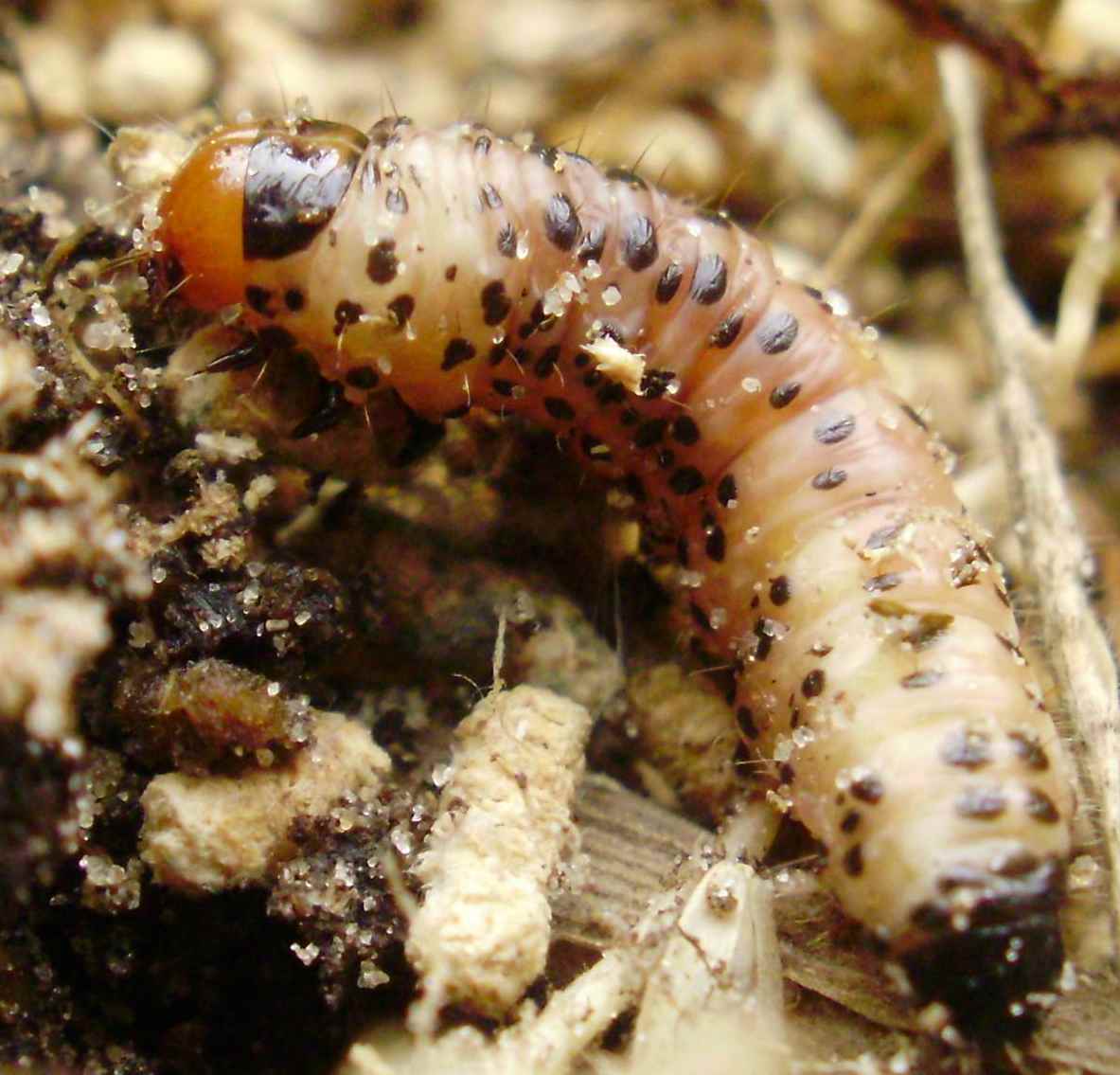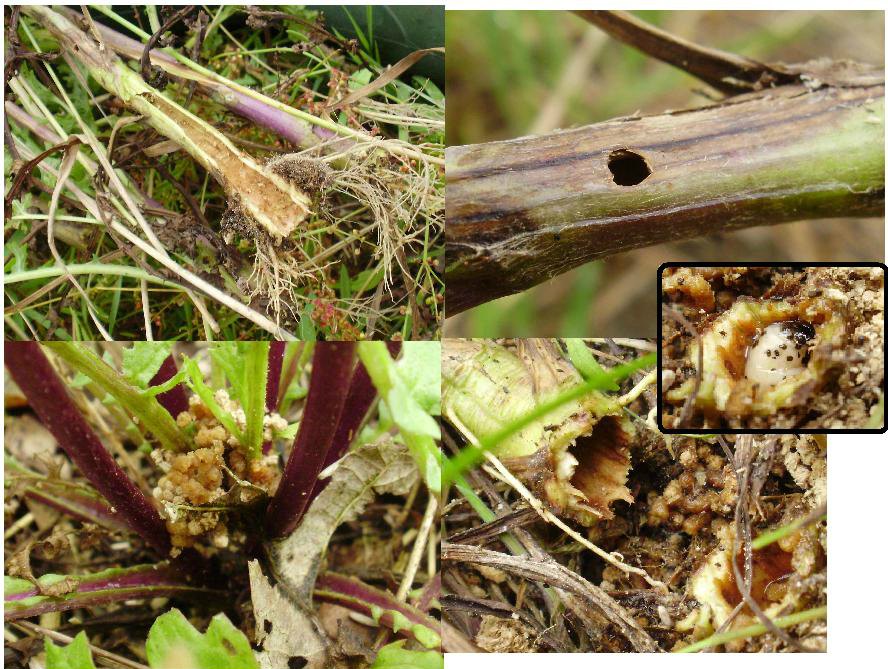Diptera.info :: Miscellaneous :: General queries
|
Species feeding on common ragwort (Senecio jacobaea)
|
|
| Gerrit Oehm |
Posted on 31-12-2011 19:31
|
|
Member Location: Germany Posts: 180 Joined: 26.11.11 |
Which species feed on common ragwort (Senecio jacobaea)? (in Germany and neighbour countrys) As I know it, there are Lepidoptera: - Conchylis atricapitana - Conchylis aeneana - Epiblema hepaticana - Epiblema trigeminana - Phycitodes maritima - Phycitodes saxicolais - Thyria jacobaeae Chrysomelidae - Longitarsus jacobaeae -Longitarsus dorsalis I found as well a member of the Lepidoptera - Hepialidae? family, but I was not able to identify it (see attachement). Where I live, in northern Germany, we have growing numbers of common ragwort. Consequential the population of Thyria jacobaeae, which is a Red List species here, grew. Which is interesting is, that one regional teams of the German Society for Nature Conservation had to combat the plant, because of its high toxcity and its expansion on grazing lands. Gerrit Gerrit Oehm attached the following image:  [100.19Kb] |
|
|
|
| Sundew |
Posted on 31-12-2011 22:27
|
|
Member Location: Berlin and Baden-Württemberg, Germany Posts: 3939 Joined: 28.07.07 |
There are still more Lepidoptera caterpillars feeding on Senecio. S. jacobaea may not be the only food plant, other Asteraceae or even other herbs will do, too. Your listed names are partially outdated ("Conchylis" is Cochylis, "Conchylis aeneana" is Commophila aeneana, "Epiblema trigeminana" is E. costipunctana, "Phycitodes saxicolais" is P. saxicola.) In which plant part did you find the depicted caterpillar - was it a stem borer, a root borer, or a leaf roller? It could well belong to Tortricidae or Crambidae (there are some Udea species with rather similar caterpillars that are said to feed on Senecio; they occur, however, in alpine regions). As I am no micro moth specialist, I recommend you the Lepiforum (http://www.lepifo...) where you surely will find expert help! Best regards and happy New Year, Sundew Edited by Sundew on 31-12-2011 22:28 |
|
|
|
| Gerrit Oehm |
Posted on 01-01-2012 10:47
|
|
Member Location: Germany Posts: 180 Joined: 26.11.11 |
A happy new year to you, too! I found the caterpillar in the root/stem of the ragwort. Gerrit Gerrit Oehm attached the following image:  [186.7Kb] |
|
|
|
| Sundew |
Posted on 01-01-2012 18:53
|
|
Member Location: Berlin and Baden-Württemberg, Germany Posts: 3939 Joined: 28.07.07 |
Very interesting - this is really a case for the Lepiforum! If you get an identification of the caterpillar, please let me know. However, it might be necessary to rear it and wait for hatching of the imago to get a sure ID. In my lectures on poisonous plants, the taxa containing pyrrolizidine alkaloids (PA) play an important role (PA are produced in several families, especially Asteraceae and Boraginaceae), and I mention cases of insect larvae that are able to incorporate the alkaloids for self-defense. So I am, of course, interested in your caterpillar. There is an interesting book, edited by A. Schaller (2008), Induced Plant Resistance to Herbivory. Chapter 10, written by T. Hartmann and D. Ober, is titled: "Defense by Pyrrolizidine Alkaloids: Developed by Plants and Recruited by Insects". You can google it and perhaps contact the authors. These insect larvae may well be polyphagous but prefer PA plants, among which the widely distributed Senecio species play an important role. The horse riding centre where I use to go to tries very hard to eradicate the frequent Senecio vernalis on the grazing land, because an uptake of these plants in hay or silage might be fatal. I have never noticed caterpillars on or in the annual Senecio species, however. I shall look more closely in the coming spring! Good luck for your studies! Sundew |
|
|
|
| Gerrit Oehm |
Posted on 02-01-2012 12:44
|
|
Member Location: Germany Posts: 180 Joined: 26.11.11 |
Thank you for your help... I posted it already in the Lepiforum... and I am exited for the answer. I posted it as well in the forum of http://www.microlepidoptera.nl/ That seems a pretty good site to me as well. I will post it if I become more answers. |
|
|
|
| Gerrit Oehm |
Posted on 03-01-2012 18:42
|
|
Member Location: Germany Posts: 180 Joined: 26.11.11 |
It was determined in the Actias.de forum and the microlepidoptera.nl forum first as a Apamea sp. , but now, in the first mentiond forum a user (saischel) found out which I think is the right species: Gortyna flavago Gerrit |
|
|
|
| Jump to Forum: |












